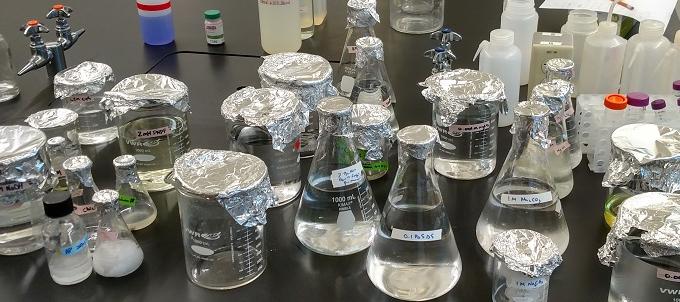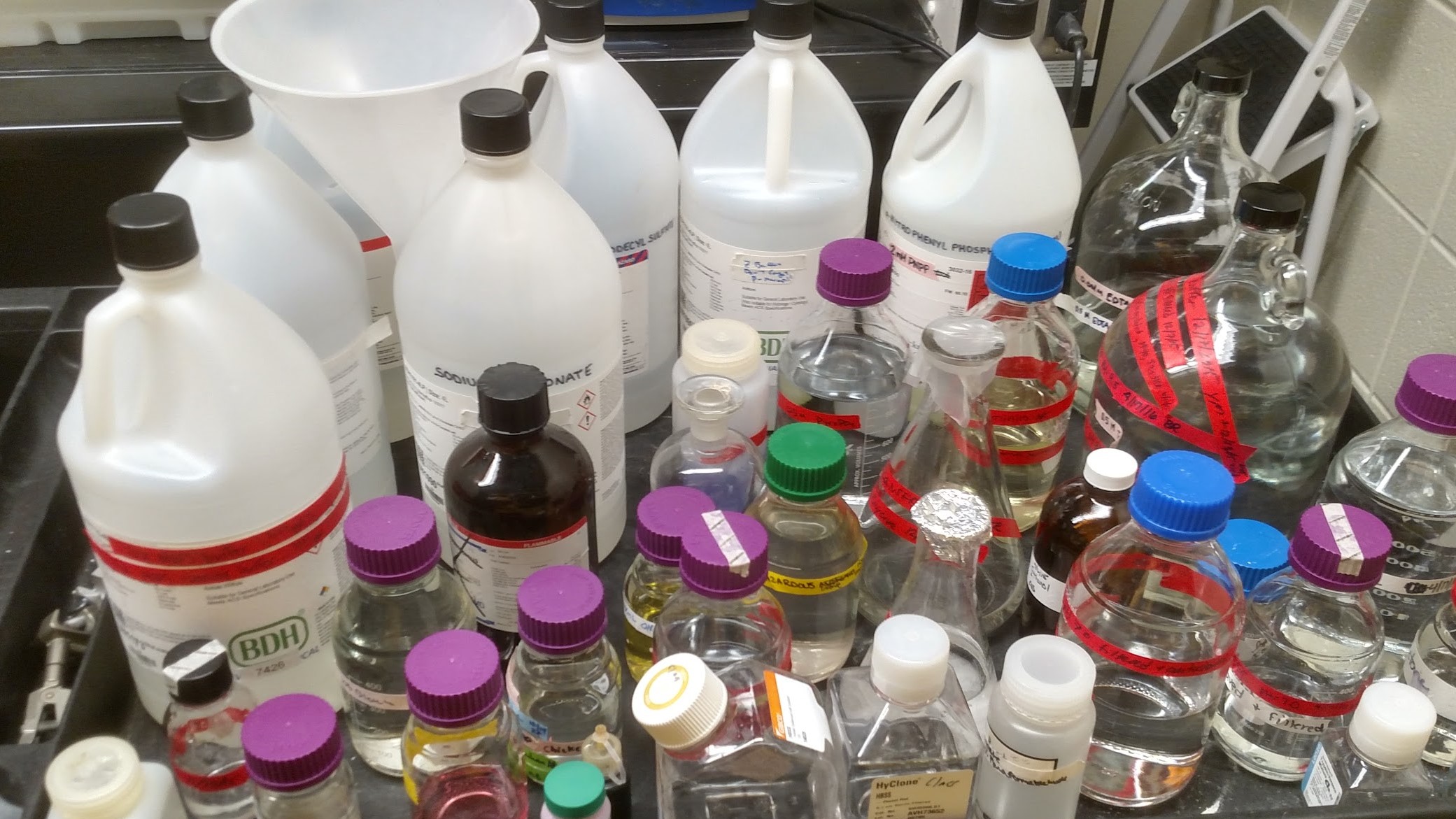
Waste Management Plan
The Waste Management Plan will be followed when disposing of wastes on campus. All regulatory requirements will be followed to ensure compliance with all Federal, State and Local laws and ordinances.
Generator Status [Chemical Hygiene Plan 5.2.1]
According to Federal guidelines St. Norbert College is currently a Conditionally Exempt Small Quantity Generator [Wisconsin - Very Small Quantity Generator (VSQG)].
All Hazardous Waste Manifests are retained by the Chemical Hygiene Officer.
Our goal is to always meet the following requirements for a very small quantity generator, from the US EPA Generator Summary Chart:
Quantity Limits: Do not generate more than or equal to 100 kg (220 lbs.) of hazardous wastes in a month;
On-Site Accumulation Quantity: Less than or equal to 1000 kg (2,200 lbs); and less than or equal to 1 kg (2.2 lbs) of acute hazardous waste; less than or equal to 100 kg (220 lbs) of acute spill residue or soil.
EPA ID Number: WID 010241867 - Not Required as a Very Small Quantity Generator. For site identification purposes we will continue to use our EPA ID number on shipping manifests and on all correspondence and reports.
Accumulation Time Limits: None
Storage Requirements: None
Waste Streams [Chemical Hygiene Plan 5.2.2]
A waste stream characterization for each experiment or process waste will be available based on generator knowledge, or on a chemical analysis of suspect waste streams or experiments. These records will be maintained by the CHO and made available in the Waste Management Plan.
5.2.2.1 - Art Department - Universal Waste (empty paint spray cans, unused paint, supplies)
5.2.2.2 - Biology Department - Hazardous Waste (biohazardous, flammable, toxic)
5.2.2.3 - Chemistry Department - Hazardous Waste (corrosive, flammable, toxic)
5.2.2.4 - Facilities - Universal Waste (batteries, used oil, antifreeze, used fluorescent lamps
5.2.2.5 - IT Department - Universal Waste (batteries), Recycling Electronic Waste (discarded computers, laptops, small office equipment
5.2.2.6 - Offices - Universal Waste (batteries)
5.2.2.7 - Physics Department - Universal Waste (batteries)
5.2.2.8 - Health Services - Universal Waste (batteries), Special Handling (biohazardous, expired medicine, expired supplies, chemicals in test kits)
5.2.2.9 - Theater Department - Universal Waste (batteries, empty paint spray cans)
Indiscriminate disposal [Chemical Hygiene Plan 5.2.3]
Pouring waste chemicals down the drain or adding them to mixed refuse for landfill burial is unacceptable. Established procedures for proper waste disposal must be followed at all times to protect people and the environment from harm due to improper hazardous waste disposal.
Proper disposal [Chemical Hygiene Plan 5.2.3.1] St. Norbert College uses the Brown County Hazardous Material Recovery Facility - 2561 South Broadway, Green Bay, WI 54304 for dropping off very small quantities of Hazardous and Universal waste.
Emissions [Chemical Hygiene Plan 5.2.4]
Fume Hoods should not be used as a means of disposal for volatile chemicals. Proper lids that seal the waste container must be used. Containers must be closed except when adding more solution, or transferring solution to another container.
BTU emissions [Chemical Hygiene Plan 5.2.4.1]
The Wisconsin NR 419.03 limits organic compound emissions. St. Norbert College falls under the following category of direct sources, and is exempt from the requirement to obtain a construction permit, NR406.04 Direct sources exempt from construction permit requirements.
Furnaces [Chemical Hygiene Plan 5.2.4.2]
(1)(a) One or more external combustion furnaces at a source which will not burn any hazardous waste identified under ch. NR605, or which have been issued a license or licenses under ch. NR 680, and if no individual furnace is designed to burn the following fuels at more than the maximum rates indicated: 5. Gaseous fossil fuel at a heat rate input of not more than 25 million BTU per hour.
Laboratories [Chemical Hygiene Plan 5.2.4.3]
(j) A laboratory which emits volatile compounds, sulfur dioxide, carbon monoxide, nitrogen oxides or particulate matter or a combination thereof at a rate of less than 5.7 pounds per hour unless the emissions of any single hazardous air pollutant listed under section 112(b) of the act equal or to exceed 10 tons per year or the cumulative emissions of hazardous air pollutants listed under section 112(b) of the act equal or exceed 25 tons per year.
Chlorofluorocarbons (CFCs) [Chemical Hygiene Plan 5.2.4.4]
A log of the CFCs recovered by certified vendors, including the amounts recovered, and the person conducting the work. 40 CFR 82.156 Persons who take the final step in the disposal of a small appliance must (2) Verify that the refrigerant has been evacuated from the appliance. Such verification must include a signed statement from whom the appliance is obtained that all refrigerant that had not leaked previously has been recovered from the appliance or shipment of appliances in accordance with paragraph (g) or (h) of this section, as applicable. This statement must include the name and address of the person who recovered the refrigerant and the date the refrigerant was recovered or a contract that refrigerant will be removed prior to delivery.
Hazardous Medical Wastes [Chemical Hygiene Plan 5.2.5]
The Medical College of Wisconsin manages any hazardous medical wastes are that are generated in their program.














